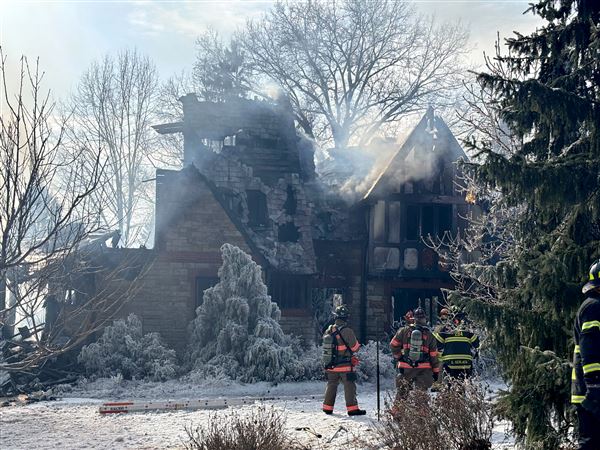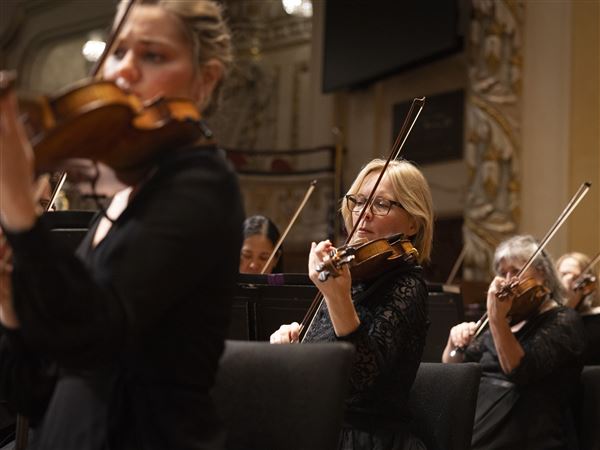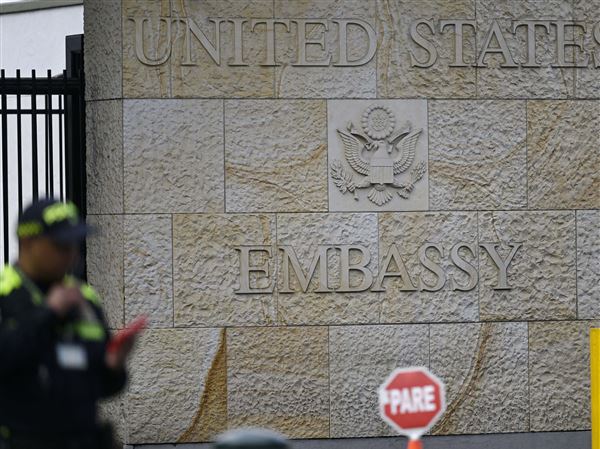PHILADELPHIA
A lawyer for a Philadelphia abortion provider charged with killing seven babies allegedly born alive is trying to show that at least the first baby had died in the womb and that the mother was not as far along in the pregnancy as the prosecution claims.
A young woman who was 17 when she aborted "Baby A" spent several hours testifying in Kermit Gosnell's murder trial.
The prosecution says she was nearly 30 weeks in her pregnancy. And one of Dr. Gosnell's medical assistants, who had testified that late-term babies were routinely cut with scissors after delivery, said she was disturbed by the baby's size and pinkish color.
The prosecution, as it opened the case last week, said the trial was not about abortion, but about murder. Assistant District Attorney Joanne Pescatore told the Common Pleas Court jury that evidence would show Dr. Gosnell, 72, was a "wolf in sheep's clothing" who "used and abused desperate women."
But defense lawyer Jack McMahon suggested that no babies survive after the drug digoxen is administered into the womb. The drug was used on the teen mother, according to her medical records, which also show that her aunt paid $2,750 in cash for the abortion.
Mr. McMahon tried to show that the teenager also could have been earlier in her pregnancy than her doctors estimated.
Prosecutors believe she was well beyond the 24-week limit in Pennsylvania. Dr. Gosnell started a three-day outpatient procedure on the teen in 2008 in Delaware, where the limit is 20 weeks. The baby was delivered at his clinic in West Philadelphia.
The now-imprisoned medical assistant, Andrienne Moton, has said she was so concerned by the baby's appearance that she took a cell phone picture of it. Moton said last week that late-term babies were routinely cut with scissors after delivery, and she acknowledged that she performed the technique at least 10 times.
Moton has pleaded guilty to third-degree murder, which carries a 20- to 40-year term, as well as conspiracy and other charges. She has been in prison since early 2011, when Philadelphia prosecutors arrested Dr. Gosnell, his third wife, Pearl, and eight other employees. Most of them have pleaded guilty and are expected to testify.
Mr. McMahon asked the prosecution's medical expert if gestational age isn't an imprecise estimate, with a second-trimester range of about two weeks on either side.
"This isn't an exact science, where two plus two equals four?" he asked Daniel Conway, a Philadelphia neonatologist with St. Christopher's Hospital.
Dr. Conway agreed that gestational age is an estimate but said the estimate is based on a scientific calculation of a long list of variables that includes head size, femur length, skin development and the mother's last menstrual period.
Ultrasound records from Dr. Gosnell's clinic show three different measurements for the teen's fetus, two that suggested an age of 29 or 30 weeks, and a much smaller measurement that corresponds with a 24- or 25-week-old fetus. Prosecutors believe Dr. Gosnell took new measurements and overruled his staff when women wanted late-term abortions.
But Mr. McMahon suggested that the doctor had more training than his staff -- who allegedly lacked training and licenses for the work they did -- and appropriately recalibrated their work.
Dr. Gosnell, 72, is charged with first-degree murder in the seven infant deaths, and third-degree murder in a patient's overdose death. He faces the death penalty if convicted in the infant deaths.
The jury of seven men and five women, along with five alternates, endured graphic testimony and photographs throughout the day, including one that showed an approximately 2-inch gash in the back of a baby's neck, where Moton said the babies were routinely "snipped" to "ensure fetal demise."
Dr. Conway testified that even premature babies, born in the second trimester, feel pain. He said doctors define them as "born alive" if there is a heartbeat. At that point, he said, they are treated as patients and, at a minimum, kept comfortable, even if they are deemed too young to survive.
As for viability, Dr. Conway said babies with a gestational age of 27 to 30 weeks have an 85 percent chance of survival, and a low risk of serious disabilities. At 22 to 24 weeks gestation, the chances are not good, he said.
Dr. Conway was also asked about the collection of fetal feet found in jars at Dr. Gosnell's clinic. Moton told jurors that Dr. Gosnell kept them in cases where the family wanted DNA, perhaps for legal purposes. Investigators, though, have said they can't find any medical explanation for the macabre practice.
"There are alternate ways of preserving DNA," Dr. Conway said, "and the foot itself is a weak prediction of gestational age."
Moton, the first employee to testify, sobbed as she recalled taking a cell phone photograph of one baby left in her work area. Dr. Gosnell later joked that the baby was so big he could have walked to the bus stop, she said.
Jurors saw Moton's photograph of the boy called "Baby A" on a large screen in the courtroom, which took on a bizarre look as witnesses testified near a hospital bed with stirrups and other aging obstetric equipment. Denied the chance to bring jurors to the shuttered inner-city clinic, prosecutors instead recreated a patient room in court.
The mother of "Baby A" described in testimony a painful three-day abortion process that started at Dr. Gosnell's clinic in Delaware. She was 17, had an infant daughter and was told by Dr. Gosnell she was 24 weeks pregnant -- the legal limit in Pennsylvania, but not in neighboring Delaware, where abortions are banned after 20 weeks.
The Chester woman said she given abortion drugs in Delaware and sent home the first two days, then was directed to the West Philadelphia clinic the third day.
She was in severe pain by then, pain that only worsened the following week, she said.
Her aunt had taken her to the clinic and paid the $1,300 fee, and they had not told her mother.
"I never felt pain like that, ever," the woman said. "I couldn't talk to anybody and tell anybody."
But the teen ended up being hospitalized for two weeks with a large abscess and a blood clot near her heart. Prosecutors say she is one of countless patients injured during botched abortions or unsanitary conditions.
One patient, a 41-year-old refugee, died after an overdose of drugs allegedly given to her during a 2009 abortion.
Moton, 35, had lived with Dr. Gosnell's family during high school because of problems at home, then went to work for him years later. She earned about $10 an hour -- off the books -- from 2005 to 2008 to administer drugs, perform ultrasounds, help with abortions and dispose of fetal remains.
Mr. McMahon, the defense lawyer, told jurors that Dr. Gosnell returned to the impoverished neighborhood after medical school when he could have struck it rich in the suburbs. He called the prosecution of his client, who is black, "a lynching."
But prosecutors say Dr. Gosnell made plenty of money over a 30-year career using cheap, untrained staff, outdated medicines and barbaric techniques to perform abortions on desperate, low-income women.
And they say he made even more on the side running a "pill mill," where addicts and drug dealers could get prescriptions for potent painkillers. Authorities found $250,000 in cash under a mattress when they searched his home.
First Published: March 25, 2013, 8:00 a.m.
















